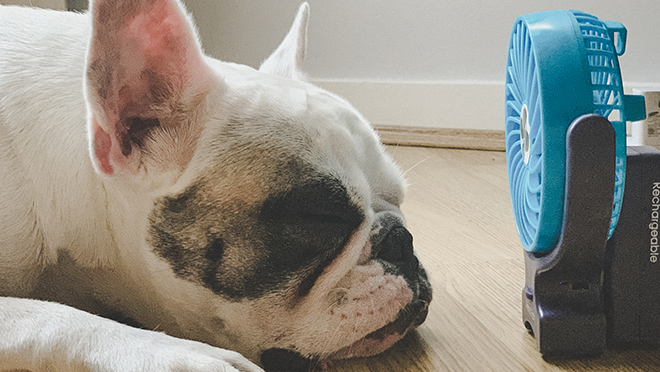How to keep pets safe and cool this summer

Be heat smart during the dog days of summer
It took a while for the summer heat to arrive in B.C., and now that it's here, it's time to get outside. Just recognize that hot weather can be uncomfortable, and even dangerous, for pets.
Being covered in fur and with a limited ability to cool themselves, special attention should be given to ensuring they remain safe and comfortable, especially during a heat wave.
Here are some tips for keeping your pets safe and happy this summer.
Leave pets at home, and never in a hot vehicle
A parked vehicle on a hot day is a dangerous, even deadly, place for an animal. In fact, according to the BC SPCA, a dog left in a hot car can perish in just 10 minutes. Learn what to do if you come across a pet locked alone in a vehicle on a hot summer day.
Plan ahead and leave pets at home when out running errands. Taking steps to cool your home will help them be more comfortable, and you'll appreciate returning to cooler temperatures too.
Keep pets comfortable and safe at home
When pets are at home, follow these tips to keep them safe and comfortable:
- If you leave windows open to bring cool air into your home, ensure they have a secure, locking screen to prevent your dog or cat from escaping or accidentally falling through.
- Ensure your pet's ID tag is up to date with your contact information. If you have an indoor cat, consider writing 'indoor cat' on the tag. This way, if they get out and are found, neighbours will know they're not supposed to be out wandering.
- If your pet has free reign in the home when you're out, keep doors open to darker and cooler areas – like those to the bathrooms or basement – so they have a cool place to hang out.
- If your dog is in a crate while you're out, put the crate in a cool room and consider purchasing a cooling mat to place inside. These mats are made of a special kind of cooling gel that's activated by the pressure of your pet's body.
And of course, an ample supply of fresh water should always be available.
Get pets outside, but not in the midday heat
Keep these tips in mind so you both get the most of your outdoor adventures:
- Opt for walking in the early morning and later in the evening.
- Watch for signs that they're overheating. Get to know the signs of heatstroke in pets.
- If your dog loves the water, take them to a local lake or river to splash around and cool off. Some of our recreation areas offer dog-friendly areas to chill out with your pooch.
Take extra care with a brachycephalic dog
Your bulldog, boxer, pug, or shih tzu may want to run in the heat, but as brachycephalic dog, they're not designed for it. Those shortened noses aren't great for panting, which is a dog's primary weapon against overheating.
Take extra care for your dog and watch for these signs of trouble:
- Distressed breathing
- Panting that seems to be excessively laboured
- Difficulty walking
- Vomiting
- Glazed eyes
- Constant snorting
BC SPCA hot weather hazards, signs of heatstroke, and more
Watch that food at the barbeque
Keep a close eye on pets to ensure they're not snacking on food they shouldn't have during summer barbeques and get-togethers. Foods like raisins, grapes, onions, chocolate, and products with the sweetener xylitol can be deadly for pets. And alcoholic beverages can cause intoxication and comas.
Shaving a pet's fur can be counter-productive
Depending on the breed, shaving off a dog or cat's fur to help them stay cool can actually have the opposite effect. Many animals' coats are designed to be an insulator, keeping the cool air close to the skin when temperatures rise.
Shaving off all (or most) of their fur also removes their skin's first-line defense against sunburns, twigs, and other hazards. Rather than shaving, a little trim and some regular brushing to help increase air circulation should do the trick.
If you're unsure about the right grooming practices to keep your pet safe and comfortable, check with your veterinarian.

